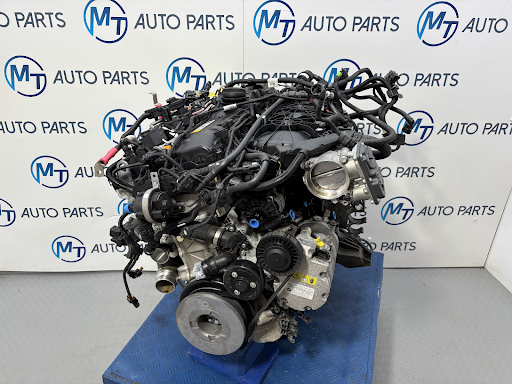For decades, BMW has built its legacy on a simple but powerful promise: to deliver the “Ultimate Driving Machine”. At the heart of that promise lies a relentless focus on engine innovation—balancing raw performance with razor-sharp precision. As the automotive landscape shifts toward sustainability, connectivity, and electrification, BMW continues to change its powertrains to meet the demands of both purists and progressive drivers.
Let’s explore how BMW’s latest generation of engines blends tradition with transformation—engineered to push the limits of performance, efficiency, and driving emotion.
The Backbone: BMW’s Modular Engine Architecture

Image source: mtautoparts.com
BMW’s current engine lineup is built on a modular architecture known internally as the “B-series”. These engines—ranging from three-cylinder to inline-six and V8 configurations—share a uniform design philosophy and parts interchangeability. That means fewer production costs, but more importantly, it allows engineers to innovate rapidly across multiple vehicle platforms.
Take the B58 inline-six, for example. This 3.0L, B58 engine unit has become a fan favorite thanks to its silky-smooth power delivery, low-end torque, and impressive tuning potential. It powers everything from the 3 Series and Z4 to the Toyota Supra (yes, really). With a closed-deck block, integrated water-to-air intercooler, and dual-scroll turbocharger, it’s the definition of modern, efficient power.
Electrified Powerhouses: Mild Hybrids and Plug-In Hybrids
To meet stringent emissions standards without compromising on performance, BMW is integrating 48-volt mild hybrid systems across many of its engines. These systems add a small electric motor that supports the combustion engine during acceleration, helps smooth out stop-start transitions, and even harvests energy during braking.
For plug-in models, such as the BMW 330e or X5 xDrive50e, the hybrid systems are getting more sophisticated. The latest PHEVs pair turbocharged four- or six-cylinder engines with electric motors and larger battery packs, providing all-electric ranges of 80–100 km in some cases—enough for most daily commutes, with performance that rivals full petrol models.
The S63 and S58: High-Performance with a Purpose
On the high-performance front, BMW’s M division continues to refine its engines for maximum performance and needs. The S58, a 3.0L twin-turbo inline-six, is a high-output sibling of the B58. Found in the M3, M4, and X3 M, it features a forged crankshaft, upgraded cooling, and a redline over 7,200 rpm—built to take abuse on track days without losing composure.
Then there’s the S63, the 4.4L twin-turbo V8 used in the M5, M8, and high-performance SUVs like the X5 M. It’s one of the most powerful engines BMW has ever built, with outputs exceeding 600 hp in Competition variants. Yet it’s surprisingly refined, thanks to variable valve timing, high-precision direct injection, and cylinder-bank turbos that drastically reduce lag.
Next Horizon: Hydrogen and Advanced EV Platforms
While electric mobility is front and center, BMW is also investing in hydrogen combustion technology as part of its long-term vision. The iX5 Hydrogen is already on limited release in pilot markets, pairing a hydrogen fuel cell with an electric drive system. Unlike EVs, hydrogen refueling takes just minutes—offering a future-friendly alternative for long-distance drivers.
Meanwhile, the upcoming “Neue Klasse” platform (launching in 2025) will debut an entirely new generation of EV powertrains and battery systems. BMW promises 30% more range, 30% faster charging, and 25% more efficiency—thanks to sixth-generation eDrive units and new cylindrical battery cells.
Intelligent Integration: Where Software Meets Hardware
Beyond raw performance figures, BMW’s powertrains are becoming smarter. From predictive thermal management to AI-assisted efficiency modes, software is now just as important as displacement or compression ratios. Systems like BMW’s Adaptive Energy Recovery customize regen braking intensity based on road conditions and traffic flow.
This merging of digital intelligence with mechanical precision is BMW’s secret sauce going forward—making engines not only more powerful, but also more responsive, efficient, and sustainable.
Final Thoughts
BMW’s engine development is no longer just about building faster cars—it’s about creating versatile, intelligent, and emotionally engaging machines for every kind of driver. Whether it’s the roar of an M engine or the seamless push of a hybrid powertrain, every BMW engine reflects the same DNA: precision, power, and the pursuit of perfection.
In a world of rapid change, BMW isn’t abandoning its roots—it’s reengineering them for the road ahead

